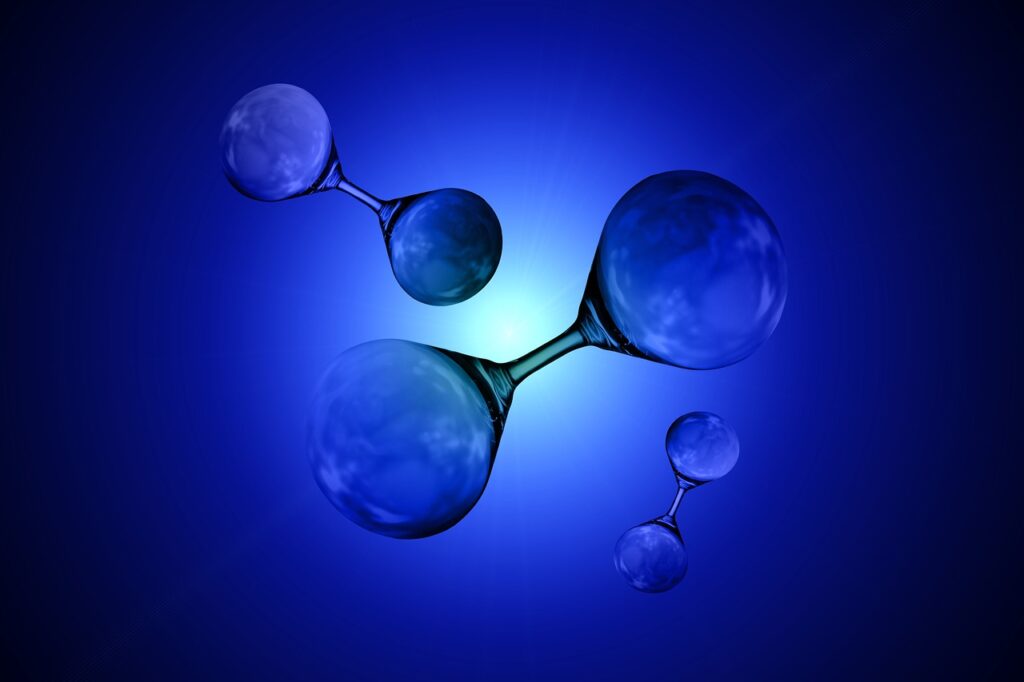A recent patent filed by NUOVO PIGNONE TECNOLOGIE SRL titled “A methane pyrolysis reactor and a methane pyrolysis method” introduces an innovative approach to hydrogen production. This patent outlines a method and apparatus for converting methane into hydrogen and carbon dioxide using a molten metal-supported reactor, a crucial step in the burgeoning hydrogen economy.
Features and Improvements
The patent describes a natural gas stream passing through a specially designed porous and permeable plate to create natural gas bubbles. These bubbles then traverse a molten metal column, resulting in methane decomposition into hydrogen gas and solid carbon. One notable improvement is the precise engineering of the plate’s pore size. The pores are designed such that the capillary pressure prevents the molten metal from penetrating, maintaining the integrity of the column while optimizing methane conversion. This feature ensures efficient gas distribution and reaction rates, distinguishing this technology from existing methods.
Potential Applications
This patented technology has versatile applications across various sectors. It could be pivotal in industries targeting cleaner hydrogen production methods, such as fuel cell technology for electric vehicles, industrial heating, and chemical manufacturing. The ability to produce hydrogen efficiently on a large scale could also bolster efforts in renewable energy storage and green energy projects, where hydrogen serves as an energy carrier.
Impact on the Hydrogen Market
Introducing this methane pyrolysis reactor has the potential to significantly impact the hydrogen market. Providing a more efficient and potentially cleaner method for hydrogen production can reduce reliance on traditional steam methane reforming techniques, which are often energy-intensive and produce substantial carbon emissions. If scaled effectively, this technology could lower the overall costs of hydrogen production, making it more competitive with fossil fuels and other renewable energy sources.
Comparison with Existing Solutions
Current hydrogen production technologies, such as steam methane reforming (SMR) and electrolysis, have their respective challenges. SMR, while currently dominant, produces a high carbon footprint. Electrolysis, although environmentally friendlier, is often more expensive due to high electricity demands. The described methane pyrolysis reactor presents an intermediate solution, combining lower carbon emissions with potentially lower operational costs, thus offering a more sustainable alternative.
Technical Specifications and Methodologies
Key technical details of the patent include:
– Using a porous and permeable plate to generate natural gas bubbles.
– Ensuring the pore size is calibrated to prevent reflux of molten metal by maintaining appropriate capillary pressure.
– The decomposition process within a molten metal column to yield hydrogen gas and solid carbon.
– Separation mechanisms for hydrogen and carbon byproducts to enhance purity and efficiency.
Key Takeaways
This NUOVO PIGNONE TECNOLOGIE SRL patent introduces a novel methane pyrolysis method that could reshape the hydrogen production landscape. By leveraging a uniquely designed reactor and precise control over gas distribution, this technology promises enhanced efficiency and lower emissions than traditional methods. Its potential applications across numerous industries and its likely influence on reducing hydrogen production costs underscore its importance in advancing the global hydrogen economy. While it may not solve all challenges associated with hydrogen production, it represents a significant step forward in making hydrogen a more viable and sustainable energy solution.





